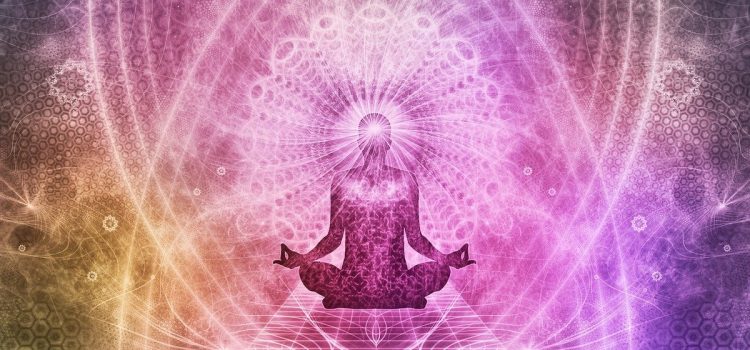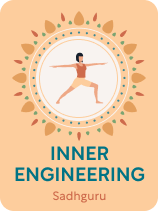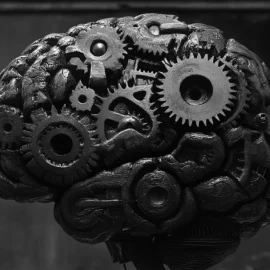

This article is an excerpt from the Shortform book guide to "Inner Engineering" by Sadhguru. Shortform has the world's best summaries and analyses of books you should be reading.
Like this article? Sign up for a free trial here.
What is “inner engineering”? Did you know that practicing yoga can help you transform yourself, both inside and out?
In his book Inner Engineering, renowned yogi Sadhguru provides readers with an introduction to his transformative yogic method he calls “inner engineering.” He mostly focuses on philosophical concepts, but he does offer some basic practices you can do to put some of these concepts to work in your own life.
Here are some practical recommendations from yogi Sadhguru’s book.
The Inner Engineering Method
What is “inner engineering”? Sadhguru explains that to “engineer” something means to design it to be the way you want it. We engineer the world around us constantly, but we neglect to engineer our inner world.
Practices to Begin Your Inner Engineering
Sadhguru’s book focuses more heavily on the philosophical concepts behind Sadhguru’s yogic methods. But he does offer some basic practices you can do to begin to put some of these concepts to work in your life. In this section, we’ll briefly describe a few of those practices. The blog section of Sadhguru’s Isha Institute website has more practices and advice.
Get in Touch With the 5 Elements
Sadhguru says that according to yogic practice, everything is composed of five elements: earth, air, water, fire, and ether. His advice: Begin to think of the world around you in terms of these five elements, and acknowledge them with reverence. For example, when you drink water, consciously acknowledge it as a sacred element; when you walk on the ground, look at the dirt and recognize it as the sacred element of earth. If you interact with the world this way, you’ll begin to see the world around you as sacred.
(Shortform note: Ether is also referred to as “space” and is sometimes thought of as “consciousness.” Sometimes called akasha, it is said to be the space between all other elements, and is also believed to be the primary source of all other elements. It is what exists beyond the physical realm, or the essence of emptiness.)
Practice Fasting
Yogic practice often involves periods of fasting. Sadhguru says when you’re attuned enough with your body, you’ll intuitively know when you need to fast. Until then, skip eating for one day every 14 days. If you can’t fast, then eat only fruit on this day.
(Shortform note: There is some scientific evidence to suggest that intermittent fasting can have several health benefits, including weight loss, reduced inflammation and improved heart health, and improved brain function. It may even reduce the risk of neurodegenerative diseases such as Alzheimer’s and Parkinson’s. However, fasting can also have some potential health risks, so it’s important to consult with a healthcare professional before starting any fasting regimen, especially if you have any underlying health conditions.)
Replace Sleep With Rest
If you keep yourself in a relaxed state throughout the day, you’ll need less sleep. Sadhguru says he only sleeps 4 to 5 hours per night. He says he can do this because he stays in a peaceful, restful state throughout the day. Your body needs rest more than it needs actual sleep. Notice how you will naturally sleep less if you practice yoga and meditation during the day.
(Shortform note: While yoga and meditation can promote relaxation and improve overall well-being, there is limited scientific evidence to suggest that these practices can significantly reduce the amount of sleep an individual needs. However, some studies have found that regular yoga practice may improve sleep quality and duration.)
Get Your Mind Out of the Gutter
According to Sadhguru, one of the major ways we limit ourselves is by identifying with our physical bodies. Focusing on sex traps us in our physical bodies and doesn’t allow for spiritual growth. Sex is a natural biological drive, Sadhguru says. We should neither deny it nor focus on it. Every other animal just acts on this imperative when they need to, and otherwise it has nothing to do with their lives. They don’t sit around dwelling on it, nor do they deny it when it’s necessary.
(Shortform note: This issue may be amplified in modern cultures, where people are exposed to sexual imagery on a regular basis via social media and have easy access to pornography.
Regular exposure to pornography can lead to several harmful effects: sex addiction, desensitization to real-life sexual experiences, unrealistic expectations, and the objectification of women. A 2014 scientific study found decreases in activity in several areas of the brains of regular porn viewers, and suggested that porn can negatively alter brain structure and function.)
Feed the Ants
Sadhguru tells the story of his mother, who practiced devotion to her family and to the world by always eating the food she had prepared last. Not only did she serve her family before herself, but she would also take a small amount of food outside to give to the ants before she sat down to eat. This was not to devalue herself, but to honor others. It was to remind herself that everything living has value and that the ants deserved to live just as much as she did. In order to raise your awareness of your connection to everything, and to acknowledge and honor the sacredness of all life, take a bit of food outside and feed the ants before you eat.
(Shortform note: In Stillness Is the Key, Ryan Holiday says that when you recognize the interconnectedness of all of humanity and all of life, it encourages humility and empathy. He says the key to cultivating this kind of humility is connecting with something greater than yourself. You can think of this as God, a universal energy, or any kind of higher power. Since many people struggle to make that kind of bigger-picture connection, starting out by taking Sadhguru’s advice to feed the ants may inspire it. Connecting with the most seemingly insignificant living things may inspire a feeling of connection to the most significant, and vice versa, in a reciprocal relationship.)
Consecrate Your Home Space
Temples are consecrated spaces that are meant to inspire us to connect with something higher. Consecration is done with ritual practices and sounds that raise the energetic vibration of a place. Spaces in nature will also naturally have higher energy, and some specific spots are very intensely energetic. People visit temples and nature for the purpose of recharging their energy. But Sadhguru says you can consecrate a space in your home as well. He recommends invoking the elements by doing the following:
- Use some sort of grain, such as rice flour, and draw a six-pointed star on a table. This is what’s known as the “star of David” in the Jewish tradition. The star will represent the air element.
- Place a shallow bowl of water in the center. This brings in the water element.
- Place in the bowl of water a small oil lamp or candle, and a flower. These represent fire and earth.
- Do this each evening, allowing the lamp/candle to burn for a while. You will start to notice an energetic shift in your room.
(Shortform note: While the Hindu tradition recognizes five elements, many other cultural and spiritual traditions acknowledge the first four—earth, air, water, and fire—and consider them sacred. For example, in the neo-pagan religion of Wicca, the four elements are seen as the building blocks of the physical world, and they are invoked in rituals to honor and call upon the powers of nature. Many Wiccan and other pagan ceremonies involve gathering objects to represent the elements, create a sacred atmosphere, and consecrate a space—very similar to Sadhguru’s instructions here.)
Practice Devotion
Sadhguru says that being a yogi means practicing devotion to all of life. In order to practice devotion, he says you should begin bowing down to whatever is around you throughout the day. Once an hour, put your hands together in a prayer position, and bow to whatever is in front of you. He says it doesn’t matter what it is, just bow down. Increase the frequency of this, and eventually you can transition to just doing it in your mind, and begin doing it all day long. He says a true devotee dissolves himself into everything around him, and this is the way to begin to dissolve yourself.
(Shortform note: The sense of dissolving into everything around you may sound unappealing or even frightening to many. This is because we’re conditioned to be fiercely attached to our individual identities and our egos, and this process involves the death of the ego. On the way to this ego death you may experience a state of confused questioning of everything you know, sometimes called a “dark night of the soul,” before you come out the other side. However, it’s important to note that the resulting egoless state of being is often described as one of intense joy and freedom. While the process of getting there may be challenging, the rewards of this state of being can be profound.)

———End of Preview———
Like what you just read? Read the rest of the world's best book summary and analysis of Sadhguru's "Inner Engineering" at Shortform.
Here's what you'll find in our full Inner Engineering summary:
- An introduction to the science of yoga and its transformative powers
- Renowned yogi Sadhguru's journey of self-discovery
- Why yoga is not meant to be an exercise or a way to get "fit"






